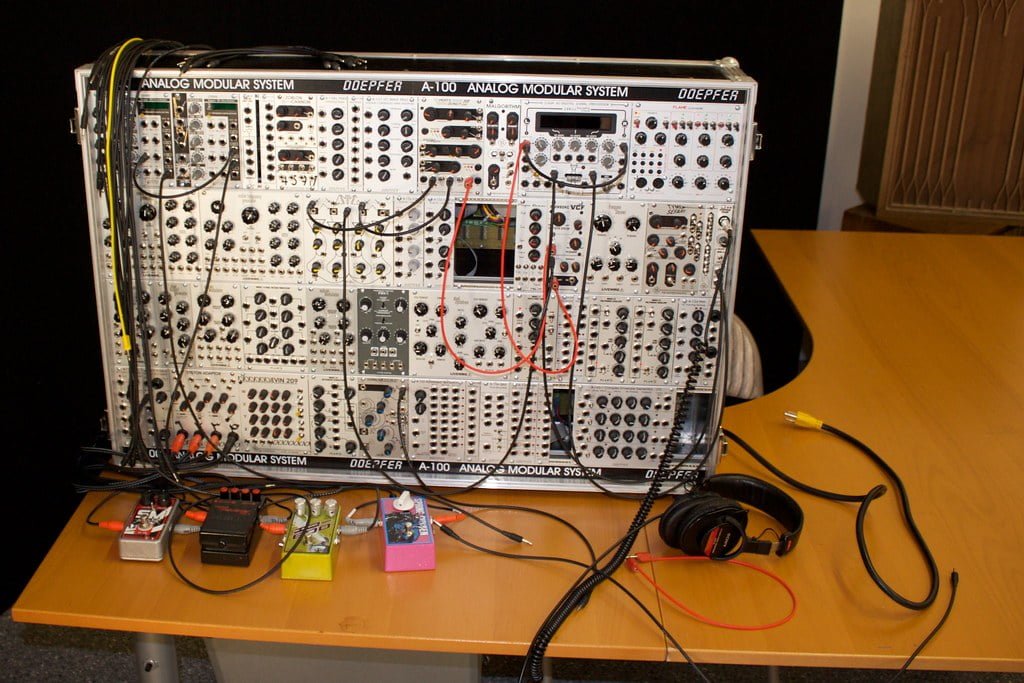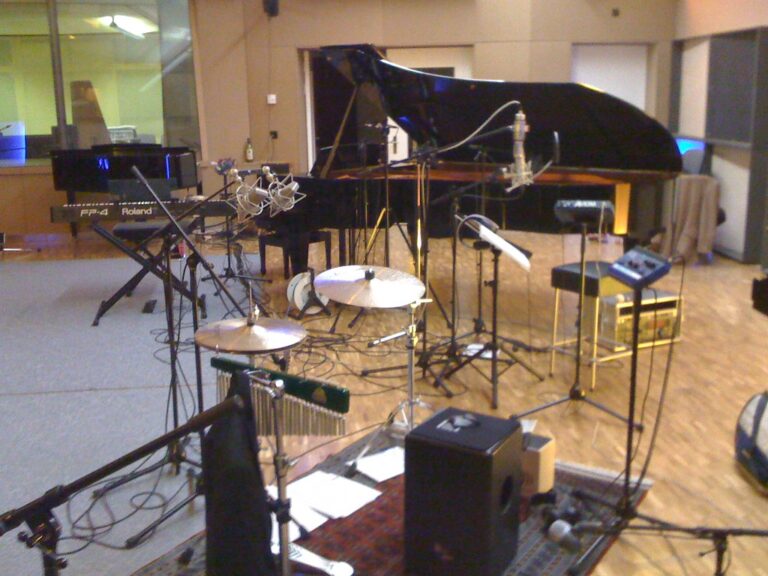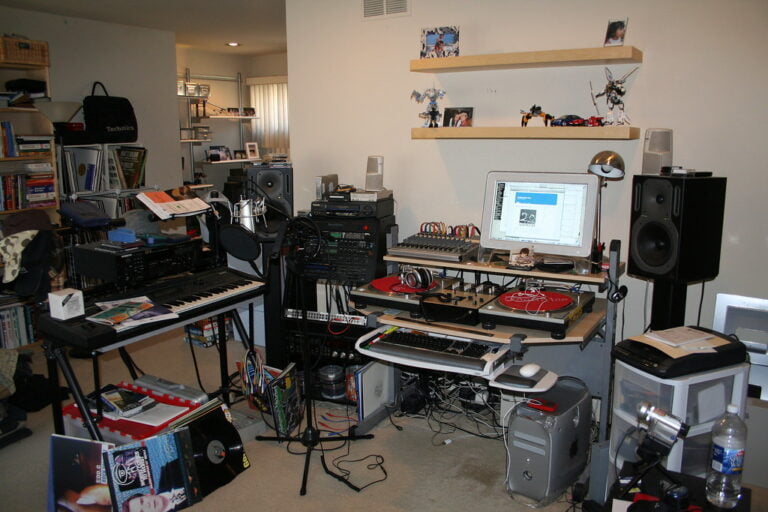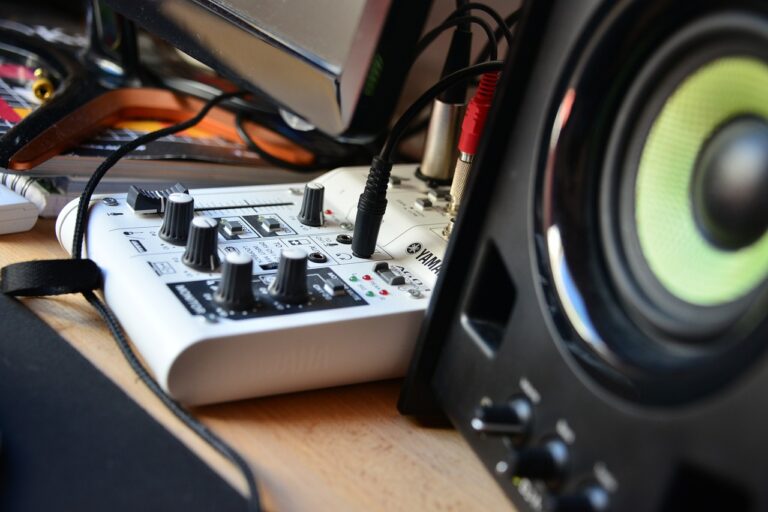Maintaining Analog Equipment: Cleaning and Calibration Tips
Keeping analog equipment in top shape is like tending to a delicate garden of sound, requiring precision and care. As I explore the meticulous world of cleaning and calibration, I uncover essential tips that can make or break the performance of your beloved analog devices. Join me as we navigate through the intricate steps needed to maintain these treasured pieces of equipment and reveal their full potential in the analog domain.
We are supported by our audience. When you purchase through links on our site, we may earn an affiliate commission, at no extra cost for you. Learn more.
Cleaning Techniques for Analog Equipment
When cleaning analog equipment components, it is important to meticulously remove dust, residue, and chinagraph marks from the tape path using isopropyl alcohol and cotton buds. Ensuring a clean tape path is critical for maintaining the quality of recordings and preventing issues like signal degradation. Alongside cleaning, it is essential to inspect components for wear signs such as flat spots or sloppy bearings. These wear signs can indicate potential issues that may affect the performance of the equipment.
Regular calibration of analog equipment is also necessary to maintain accuracy and precision in recordings. Calibration ensures that the equipment is operating within specified parameters, delivering consistent results. By following proper cleaning and calibration procedures, the longevity of analog equipment can be prolonged, and the quality of recordings can be preserved.
In addition to cleaning and calibration, demagnetization of the tape path is another critical step in maintaining analog equipment. Demagnetizing helps prevent background noise and ensures the integrity of the frequency response. While modern machines may reduce the frequency of demagnetization required, it remains an important aspect of analog equipment maintenance to uphold optimal performance. Proper cleaning, calibration, and demagnetization are integral practices for preserving the functionality and longevity of analog equipment.
Proper Demagnetizing Methods
Demagnetizing the tape path of analog equipment is an essential step in maintaining high-quality audio performance. In the domain of analog equipment maintenance, demagnetization plays a critical role in preventing background noise and frequency loss. While modern machines have reduced the frequency at which demagnetization is required, employing proper demagnetization techniques can greatly enhance the overall audio quality. It is advisable to demagnetize heads occasionally to guarantee excellent performance. Utilizing specialized demagnetizing tools is necessary to achieve effective demagnetization.
When engaging in demagnetization processes, it is imperative to adhere to calibration standards and procedures. Ensuring that the demagnetizing tools are accurately calibrated is crucial for achieving the desired results. Environmental conditions should also be taken into account, as factors like temperature and humidity can influence the effectiveness of demagnetization. By incorporating quality management practices into demagnetization routines, one can maintain consistency and reliability in audio performance. Analog pressure gauges can be utilized to monitor and adjust the pressure calibration during demagnetization, further enhancing the precision of the process. By following these meticulous steps, one can uphold the integrity of analog equipment and optimize audio output.
Mechanical Maintenance Tips
To guarantee peak performance and longevity of analog equipment, it is essential to regularly implement mechanical maintenance tips that encompass rotating fixed guides, lubricating bearings, adjusting spool brakes, and cleaning the tape path thoroughly. Adhering to these standards ensures the equipment operates at its best and maintains accuracy over time.
Rotating fixed guides periodically is essential to prevent flat surfaces from developing and to assure even wear on the analog equipment. This practice is integral to maintaining the quality of recordings and prolonging the life of the machine’s mechanical components. Additionally, lubricating bearings and linkages is necessary for smooth operation and to prevent premature wear on these essential parts. Regularly checking and adjusting spool brakes helps maintain proper tension, preventing tape slippage during operation, which can lead to inaccuracies in recordings.
Cleaning the tape path is a fundamental aspect of mechanical maintenance. Dust, residue, and chinagraph marks can accumulate over time, affecting the equipment’s performance. By cleaning the tape path regularly, you can remove these contaminants and uphold the machine’s calibration process. During cleaning, it is also essential to check for wear signs such as flat spots or sloppy bearings to address any maintenance needs promptly. By following these mechanical maintenance tips on a regular basis, you can assure that your analog equipment functions optimally and meets the necessary performance standards.
Replay and Record Alignment Procedures
Before commencing the alignment process for replay and record, it is essential to make sure that the replay side is properly aligned. This initial step ensures that the reference point for recording adjustments is accurate. When aligning the replay side, the azimuth, height, wrap, and zenith of the replay head must be precisely calibrated to achieve best performance. To execute this, noise reduction should be turned off to prevent interference during adjustments.
Throughout the alignment process, the use of digital pressure gauges is recommended to monitor pressure levels accurately. These gauges provide real-time data that can aid in making precise adjustments. Calibration results should be checked against solid-state standards to guarantee alignment is within acceptable limits. It is vital to align the replay side before moving on to the record side to establish a baseline for comparison.
When adjusting the record side, attention should be paid to achieving full-scale alignment. This involves setting the recording levels accurately to ensure the signal is neither under-recorded nor over-saturated. The National Institute of Standards and Technology provides guidelines for full-scale alignment to guarantee consistency across different equipment setups. By following these detailed procedures, the replay and record alignment can be fine-tuned to meet the highest standards of performance.
Importance of Calibration Tones
When moving to the discussion on the ‘Importance of Calibration Tones,’ a key aspect to highlight is the critical role these tones play in ensuring accurate levels and frequency response in analog equipment maintenance. Calibration tones are fundamental signals recorded on tape to guarantee correct levels and frequency response. These tones serve the critical function of aligning the replay head with the recorded signal, facilitating accurate playback. Properly marking tape boxes with calibration tones is essential for maintaining alignment, ensuring that the playback accurately reproduces the recorded audio signals. Additionally, having historical information on tape alignment can be highly beneficial, especially for individuals new to the calibration processes involved in analog equipment maintenance.
Resources from publications like SOS Publications Group offer valuable guidance on the utilization of calibration tones for maintaining analog equipment. Understanding the significance of calibration tones and their role in tape alignment is key to achieving best performance from analog equipment. By following precise calibration procedures and using calibration tones effectively, individuals can enhance the accuracy of playback and maintain the integrity of their analog audio recordings. Calibration tones are indispensable tools that contribute to the overall quality and consistency of audio reproduction in analog equipment maintenance.







